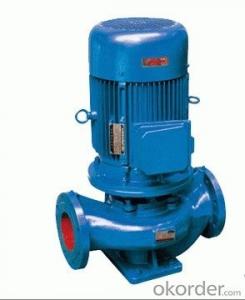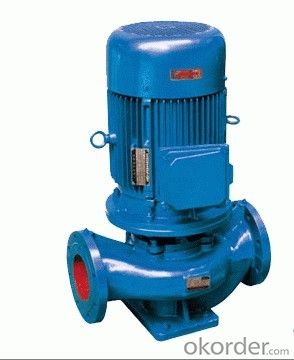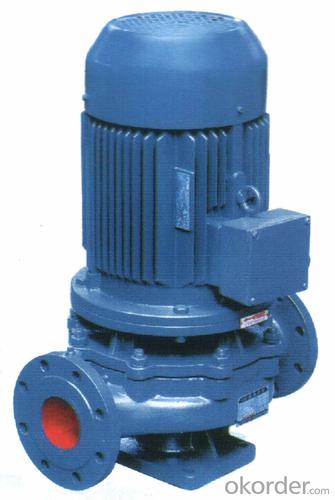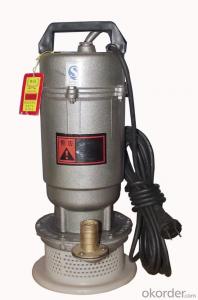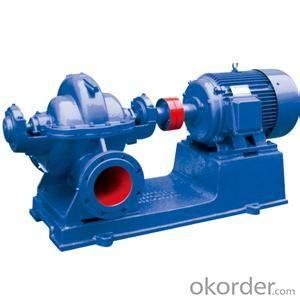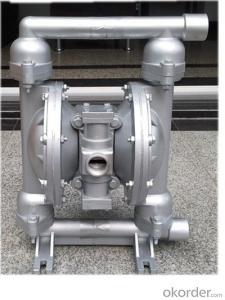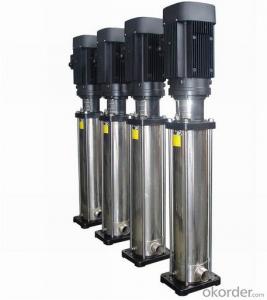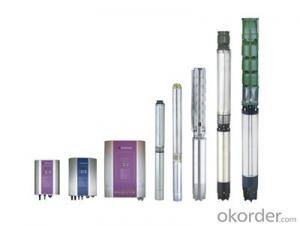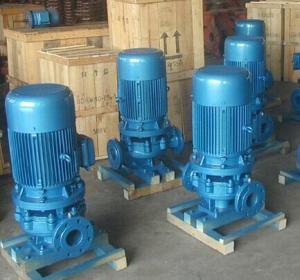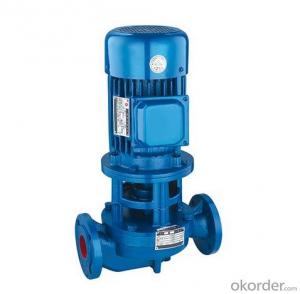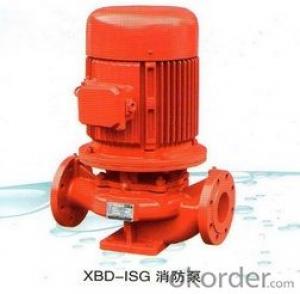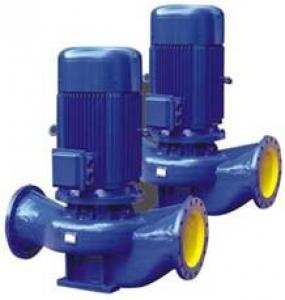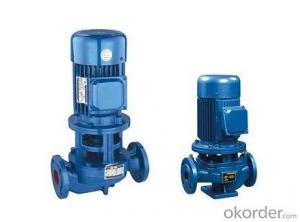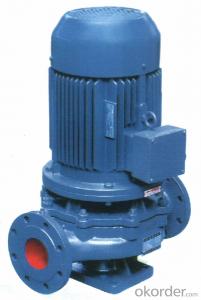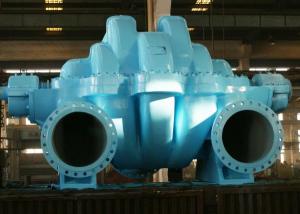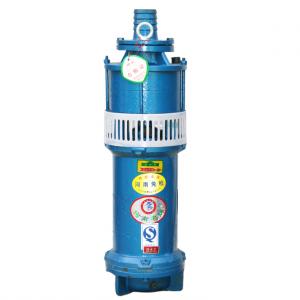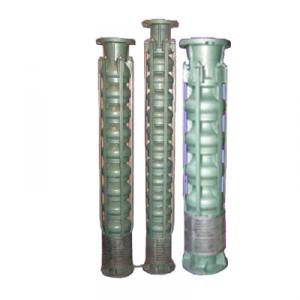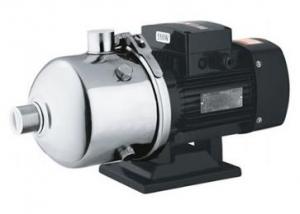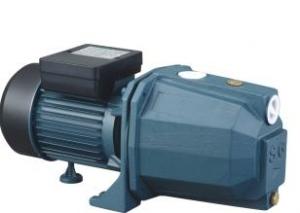ISG Vertical Pipeline Water Centrifugal Pump
- Loading Port:
- Shanghai
- Payment Terms:
- TT OR LC
- Min Order Qty:
- 1 unit
- Supply Capability:
- 1000 unit/month
OKorder Service Pledge
OKorder Financial Service
You Might Also Like
Quick Details
Place of Origin: Zhejiang, China (Mainland)
- Model Number: ISG
Theory: Centrifugal Pump
Structure: Single-stage Pump
Usage: Water
Power: Electric
Standard or Nonstandard: Standard
Fuel: electric
Pressure: Low Pressure
Application: water
Certificate: CE
Packaging & Delivery
| Packaging Details: | standard wooden plywood case or carton for ISG centrifugal pipeline water pump |
|---|---|
| Delivery Detail: | 10 days from receiving payment (according to order quantity) |
Specifications
ISG Pipe centrifugal water pump
1.High efficiency.
2.Lowest price.
3.Best quality.
4.Nice look .
Centrifugal Pipeline Water Pump
Features
•For conveying water and physical and chemical properties similar to water or other liquids.
•Single-stage, single-suction, pipeline centrifugal pump.
•High quality mechanical seals and components.
•Material: Cast iron, SS304, SS316, SS316L.
Field of industrial production
•Corrosive or abrasive fluid transport
•High viscosity or containing particles of the fluid delivery
•Food grade or ultra-high temperature fluid transport
•Toxic or hazardous fluid transport
•Industrial production water system
Mainly Usage
•Industrial, agriculture irrigation and urban water supply and drainage
•High-rise building pressurized water
•Garden irrigation
•Fire growth pressure
•HVAC refrigeration cycle
•Bathrooms
•Hearing and water circulation booster and supporting equipment
•Long distance water supply
•Water circulation, petrifaction, pharmacy, food, mining, textile and machinery industries, etc.
- Q: How to determine the pump installation elevation, why should we determine the pump installation elevation?
- Determination of pump installation elevation: the geometric height between the suction well level and the center line of the pump impeller, plus the hydraulic loss of the suction pipe, is the actual installation height of the pump. (notice: if the suction level is higher than the center of the impeller, it should be negative)To determine the water pump installation elevation reasons: general water pump nameplate on the "NPSH" value, the above calculation of the value must be less than this NPSH value, so as to ensure that water pump is not prone to cavitation.[NPSH] - allowable cavitation margin is to determine the conditions of use of the pump cavitation margin.
- Q: I have a 2001 Nissan Frontier the head gasket is shot[i think] checked thermostat and checked for clogs, flushed system, noticed bottom of radiator is cold but top is hot, is water pump shot?does not wiggle, or did i put thermostat in backwards? Steam poors out exhaust
- 2000 Nissan Altima Water Pump
- Q: What is the safety head of a pump? Why should a safety head be added?
- Pump selection should pay attention to the following points: (1) to meet the maximum load conditions, should try to reduce the waste of energy; (2) rational use of high efficiency section of the pump; (3) using the same type pump as much as possible, the type of neat, standby each other; (4) to the selection of large pump according to the actual situation, but also should consider taking into account the size, flexible deployment; (5) lack of H value changes, different types of collocation is optional pump operation. (6) to ensure the water conditions, take care of basic level, reduce the pumping depth; (7) consider the standby unit necessary; (8) check the fire with water; (9) considering the development, implementation of the combination of short and long term; (10) to the selection of water pump type local mass production.
- Q: Mercedes 2000 ml 320. I changed radiator and water pump now car only runs half as worm than it used to. So now heat blows cold to little warm depending on how cold out side
- FIT NEW THERMOSTAT
- Q: where would I be able to find information on how to change out a water pump for that specific type of vehicle and year, as well I had got a stain on the body from road work it seems to be cement how could I take spots out without damaging the body's paint? What are my options thanks...
- this is not that big a deal, this engine is 3/4 ths of a chevy sbc 305, which is basically the same as small block chevys from 1955 forward-the good thing is that this can be done quite easily in the car, just remember this engine has a serp belt, so take note of where the belts go and how the pulleys are aligned with all the accessories. DO NOT break the seal on the a/c unit, just take off the compressor and set it to the side, same with the power steering and alt. Once you get through the pulley system, just remove 4 bolts on the front of the pump, remove it, you have already drained the coolant, and keep it, either reuse it or dispose of properly, remove the pump, and clean off the old gaskets from the front of the engine block. Take the old pump with you, get one that is the exact same as the one you took off-do not allow the old pump to be taken by the parts store, buy an all new unit, not a rebuilt, and keep your old one until the new one is installed and functions properly-I know, I am probably overly protective, but many times I have brought home what appeared to be the correct pump, and it did not work, then I did not have my old one to look at to see exactly what i needed...good luck, as far as the paint, well, use a solvent to soften whatever is stuck to the paint, if it in fact is concrete, not cement as that is the powder that concrete is made from, then try a little vinegar, it is slightly acidic, will dissolve the concrete, and the spot can be removed gently, hopefully without chipping the pain-here is the good news, concrete does not chemically bond with paint, so you should have no problem...good luck, be careful.
- Q: can a water pump pumping out air instead of water?
- It wouldnt last long as the water acts as a lubricant and the seals would fail as a result .The bearings would also overheat if relying on being cooled by the water
- Q: The garage told me my water pump was pumping quot;weaklyand needs to be replaced.
- A water pump can start to 'pump weakly' as the blades on the rotor wear out. That will reduce the amount of coolant that is being moved through the system. That causes the temperature to rise overall. Usually that does not happen before the bearing wears out. When that happens you will normally see some coolant dripping out of the weep hole of the pump if the pump is on the outside of the engine.
- Q: There is a loud squeecking noise coming from the water pump and the serpentime belt isnt loose!I dont know how long it would take a mechanic to do the job?
- type into search box how to replace water pump how to replace water pump s-10 how to replace water pump chevy about two to four hours maybe depending on mechanic and how busy the shop is and before you go and start replacing water pump if its not leaking its not bad yet and most likely will be a bad pulley or belt tension-er which go bad before water pump most of time you can spray water or wd40 on pulley to check if motor not running hot and you dont see any coolant coming from water pump most likey not bad belt tension-er pulley cost about 30 bucks anyone can replace in about 30 minutes
- Q: A pump is said to be capable of pumping water up to 100 meters, but I don't want to confirm that by actually putting up a very long pipe to that height. I know that pressure is related to height, so putting pressure at the output end of the pump would simulate different heights. Any suggestions how I can rig a contraption to do this? Thanks.
- Install a pressure gauge at the pumps diischarge line and note that p=wh. H =p/w, H =p{(144)/62.4}/3.28 meters Pressure expected therefore in psi, is p={62.4/144}3.28 p=14.9 psi A pressure gauge of 0 to 50 psig range would be sufficient to indicate the expected pressure.
- Q: Hi, my mechanic said that I need a new water pump. I have a 1994 Dodge Caravan SE. What is involved with the whole changing of a water pump? He said it would cost about $400 to $500 for the whole job. Is that correct? Were is a good place to go get one? I live in Staten Island New York. Is sears a good place for that job? What is installed when they do this job? Belts or what??? I thank you for your time and any help is greatly appreciated. I will be taking my car in this week and will leave a best answer based on the correct information. Thanks again :-)
- well first off you dont mention what size engine. if you have the 3.0 l v-6, then that price will be fair if they are replacing the timing belt and tensioners when they are replacing the water pump. as for a good place it depends on the mechanics and there certifications if they have any ase certified master tech. 20+ years exp.
Send your message to us
ISG Vertical Pipeline Water Centrifugal Pump
- Loading Port:
- Shanghai
- Payment Terms:
- TT OR LC
- Min Order Qty:
- 1 unit
- Supply Capability:
- 1000 unit/month
OKorder Service Pledge
OKorder Financial Service
Similar products
Hot products
Hot Searches
Related keywords
